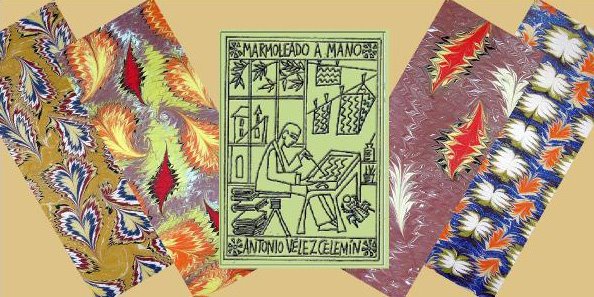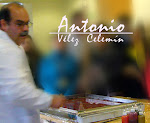
The Toledo Cathedral receives from today June 10th until September 10th an exhibition of the art bindings preserved in the Library and Archive of the Chapter. Doctor Antonio Carpallo, from the Madrid Complutense University, has directed the research works that have been extended from the year 2007, which fruit has been the complete cataloging of more than 1000 notable bindings belonging to these funds, between which he has chosen 104 exemplars, which are shown in this exhibition.
 The commissioner of the exhibition, Dr. Carpallo, during his intervention at the opening.
The commissioner of the exhibition, Dr. Carpallo, during his intervention at the opening.The presentation of the exhibition took place in the Chapel of San Pedro and it was presided by his Eminence the Cardinal Don Antonio Cañizares, the Delegate of Culture, Tourism and Craft of Castilla-La Mancha, Dña. Maria Soledad Herrero and by Don Juan Sánchez, Dean of the Chapter of Toledo, at the end of the act these authorities went to the Chapel of Reyes Nuevos, (New Kings), a truly magnificent place for this exhibition, where there were shown to them the display windows that receive on chronological order the exposed bindings, some of them sheltering exceptional manuscripts.
 Display window of classic bindings.
Display window of classic bindings. Dr. Carpallo showing a book to the authorities in the opening of the exhibition.
Dr. Carpallo showing a book to the authorities in the opening of the exhibition. One exceptional manuscript.
One exceptional manuscript.So far, this could be a small chronicle of an interesting exhibition of art binding. But: does this information have sense in this blog dedicated to marbling? Not very much, isn’t?
It would be an enormous mistake to think this way; on the contrary I believe that it has a lot of sense. Principally one display window, that one of the neoclassical bindings, has greatly sense here. Because there, it has been very important to give way to the exhibition of the decorated papers, the so named “endleaves papers" that were used in these bindings. The bindings can be contemplated opened showing obviously the papers that accompany them, or these can be seen observing a mirror placed behind the books.
 Display window of neoclassical bindings and decorated papers.
Display window of neoclassical bindings and decorated papers. Another aspect of the same display window during the acts of the opening of the exhibition.
Another aspect of the same display window during the acts of the opening of the exhibition.I have had the occasion to take part in the works that have led to this exhibition, describing the papers that adorn 330 of the bindings that have been catalogued and writing a study on the principal techniques of paper decoration used in its production.
Marbling is not the technique that prevails between these papers, undoubtedly due to the weight, between the art bindings, of the fund belonging to the Cardinal Zelada, which was formed and bound in Italy in the epoch in which this Cardinal resided there, being the use most extended in this country then, the xylographic papers. Although, we can verify it, marbling is widely present in these funds.

In a much more limited proportion we can find also exemplars bound with brocade and paste papers.
 On the first line, on the right: binding with a paste paper; on the left: with a xylographic one. On the second line on the left, whole binding in brocade paper.
On the first line, on the right: binding with a paste paper; on the left: with a xylographic one. On the second line on the left, whole binding in brocade paper. At the end, on the left, beautiful binding case realized with paste paper.
At the end, on the left, beautiful binding case realized with paste paper.The whole description of a binding must include the description of the decorated papers used, not already in a generic way, alluding to it simply like colored or decorated paper, wishing to indicate this way that it is not a white paper, but in a single way, individualizing the technique used specifically. The state of the studies on paper decoration on a global scale allows it, being written several works of primary reference. I am enormously grateful to could have collaborated with Antonio Carpallo in these works, and to could have introduced in this exhibition, even a slight sign of the beauty that decorated papers contain.
I invite all lovers of bookbinding who have the opportunity to visit Toledo to admire the exhibition of these funds as rich as the Cathedral to which they belong. And to all those who are also lovers of paper decoration, marbled or not, I present the lines that I wrote for the poster of the exhibition.
Because very often, a decorated paper was something more than just a paper added to the binding.

Text on the show case:
Papeles decorados... (Decorated papers)
"With the generic denomination of “endleaves papers” it’s named a group of techniques of paper decoration of very diverse characteristics. Two of them, the xylographic decoration, that uses wooden engravings printed by special procedures as printing was reserved to books printers; and the brocade decoration, realized with engravings in metal plates and with the help of a cylinder press, they have its origins in the most ancient engraving techniques, which turns into a decorated paper by means of the later application of color or metallic inks that replace it. Other two nevertheless, marbling, an indirect method of decoration that uses the surface of a bath for his achievement that once completed is transferred by contact to the paper; and the so named paste papers, who use this glue dyed in diverse colors, were originated in bookbinding workshops and they were developed by the same bookbinders who were using these papers in his works.
In this display window we can contemplate several examples of xylographic papers, on its majority Italian, made by Remondini, the most famous manufacturer of Italian decorated papers, which lasted during three generations and which became one of the biggest factories of Europe dedicated to the impression of papers, as engravings, or as decorated papers; and other examples of marbled papers. In other display windows it is possible to contemplate a brocade paper and some more paste papers. Thus, this exhibition of art bindings is also a small show of some exemplars of papers used as “endleaves”, papers that some bookbinders were not limiting to place in his works, but they were making it themselves, being this one more of his binding works ".












No comments:
Post a Comment